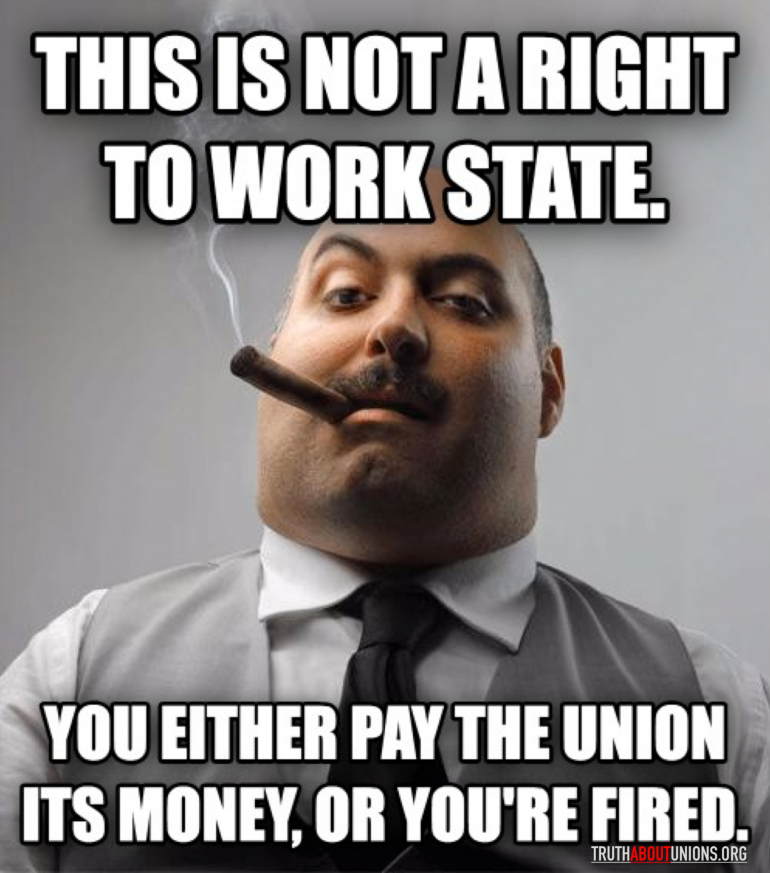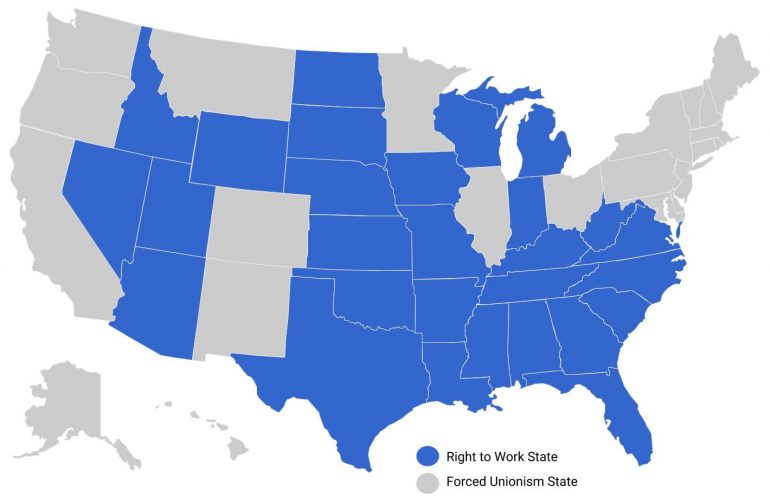
What is the difference between a “Right-to-Work” State and a “non-Right-to-Work” state?
Prior to 1947, whenever a union became the representative of employees, federal law allowed the employer and union to require all employees to pay union fees (or dues) to the union as a condition of employment.
In other words, if an employee failed to pay union fees, the union could require the employer (under a union security clause in a contract) to terminate that employee.
In 1947, Congress amended the National Labor Relations Act to allow individual states to enact so-called “Right-to-Work” laws that make required payments to a union unlawful.
Currently, there are 28 Right-to-Work states and 22 states that allow employees to be fired for not paying a union.
To learn more, go here.
Note: Right-to-Work laws only apply to those who are covered under the National Labor Relations Act, and do not apply to those persons who work for airlines or railroads under the Railway Labor Act.








Add comment